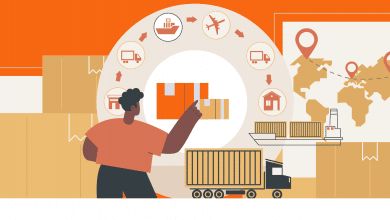Winners & Losers of the Elimination of $800 De Minimis
Amongst the recent announcements of the Trump Administration's increase in tariffs is the removal of the Section 321 $800 de minimis threshold. This little known-rule (but widely used rule) allowed shipments under $800 to enter the U.S. without paying duties.
It's a significant loophole and U.S. Customs and Border Protection estimates that $54.5 billion worth of goods entered the U.S. in 2023 using the exemption.
In this article, we'll look at what Section 321 is and who the winners and losers are from the removal of it.
What is Section 321 & the $800 De Minimis
The de minimis threshold is the minimum value of imported goods that can enter the U.S. duty-free and with minimal customs paperwork. Currently set at $800 per shipment, it allows low-value items to bypass tariffs and complex import regulations.
Previously, the de minimis threshold was $200 but was raised to $800 by the Obama administration.
This rule falls under Section 321 of the Tariff Act of 1930 (19 U.S.C. § 1321), which grants the de minimis exemption to low-value shipments. The intent is to reduce administrative burdens for customs and streamline e-commerce imports.
In contrast, informal entries apply to shipments valued between $800 and $2,500. These still benefit from simplified customs processing compared to formal entries but require duties to be paid and may involve additional paperwork, such as a CBP Form 3461 or 7501. Informal entries are often used by small businesses and importers who bring in goods in bulk but stay under the $2,500 threshold to avoid the more complex formal entry process, which requires a customs bond and additional compliance measures.
Do Other Countries have De Minimis?
Many countries have their own de minimis thresholds, but the U.S. has one of the highest at $800. Most other nations set their limits much lower, often in the range of $15 to $200. For example, the European Union's de minimis is set at €150, meaning any shipment above that amount incurs VAT and customs duties. Canada’s threshold is just CAD $20 for most imports, except for shipments from the U.S. and Mexico under the USMCA trade agreement, where it is CAD $40 for duties and CAD $150 for taxes. Australia has a relatively high threshold of AUD $1,000, but it applies only to customs duties, while GST applies to all imports.
Why is the U.S. Getting Rid of De Minimis
In September 2024, the Biden administration announced plans to reform the de minimis exemption, which allows imports valued under $800 to enter the U.S. duty-free. The administration expressed concerns that this exemption was being exploited by foreign e-commerce platforms, particularly those based in China, to circumvent tariffs and import unsafe or counterfeit goods.
In particular, Temu and, to a lesser degree, Shein, were able to offer goods for less expensively than major ecommerce players such as Amazon.
Who are the Winners and Losers?
With the removal of De Minimis there are several winners and losers:
Winners from the Removal of De Minimis
- Domestic E-Commerce Platforms (Amazon, eBay, Shopify Sellers)
- Small U.S.-based businesses that compete with Temu, Shein, and AliExpress may see reduced competition from ultra-low-priced imports.
- U.S. Domestic Manufacturers & Retailers
- Companies producing goods in the U.S. (or within tariff-protected regions) would benefit as foreign competitors face higher costs when exporting to the U.S.
- Big-box retailers like Walmart, Target, and Home Depot may see increased sales as consumers shift to domestic sources.
- Customs Brokers & Logistics Firms
- With more imports requiring formal entry processing, customs brokers stand to gain more business.
- Freight forwarders and third-party logistics (3PL) providers may benefit from companies stockpiling inventory in U.S.-based warehouses instead of shipping directly to consumers.
Losers from the Removal of De Minimis
- Chinese & Foreign E-Commerce Retailers like Temu & Shein
- Temu, Shein, and AliExpress are the biggest losers here. Shipments will now incur duty costs (and significant ones) and, also, goods will likely be subject to greater delays due to customs formalities.
- Customs & Border Protection (CBP) Resources
- While CBP benefits from better enforcement, the sheer increase in paperwork and inspections could overwhelm ports and delay shipments.
- Expect longer customs clearance times and more administrative headaches.
- Canada/Mexico Cross Border Shippers
- There is an entire cottage-industry of cross-border shipping companies from Canada/Mexico to the U.S. that effectively have allowed companies to ship from Canada or Mexico and into the U.S. avoiding U.S. duties all-together.
Is the Removal of De Minimis Permanent?
The removal of Section 321 and de minimis for China is a temporary order which means it could make a comeback at some point in the future. However, given the current environment of scrutiny towards China and Chinese companies it would seem unlikely it will come back any time soon.



